
by Tomato Wellness | Jun 8, 2020 | Food and Nutrition, Tomato Products
How can something as delicious and healthy as tomatoes be so maligned by so many people? That’s why we’re tackling the top 5 myths about tomato products!
There’s a lot of health and nutrition advice out there on these interwebs. Too much really. One article contradicting the next. It’s long been documented (often) that these ‘influencers’ are usually wrong, but they continue to be widely listened to and shared on the internet. These celebrities, influencers or sports stars that may have wonderful six-pack abs, but in no way should they be considered nutrition experts. We have always prided ourselves in going to the experts for nutrition. We have over 700 academic, peer-reviewed scientific studies hosted on our website, and we work with the World’s top Registered Dietitians to break down the science and nutrition facts about tomato products. To be a registered dietitian you must get a degree from a university in nutrition, often it includes advanced degrees or Masters, and then 1200 internship hours, as well as taking continuing education courses on the latest science and nutrition. These are the experts we go to for our nutrition advice and this is what they have to say about some of the myths right now you may see shared on Facebook from your favorite quarterback, actress, or your Aunt’s neighbor’s sister’s cousin on social media.
Canned tomato products have been around since the canning process was first invented in 1809. Since then, millions of people have relied upon canned tomatoes to capture the essence of delicious, healthy tomatoes when they are at their absolute best during the harvest, so they can flavor their meals with delicious nutrition all year long. So, how can something as delicious and healthy as tomatoes be so maligned by so many people? Tomatoes are constantly being trashed by the media and so-called “health experts”, so we are here to set the record straight on the health benefits of tomatoes!
Busting 5 Myths About Canned Tomatoes
Here are the top five myths on canned tomatoes, and we’re busting each and every one of them.
Myth # 1: Tomatoes Contain Harmful BPA
BPA is an industrial chemical used to make certain plastics and resins, including plastic bottles, and the lining of food cans. Over the past several years, health concerns have arisen over BPA in our food system, as it has been linked with potential issues, such as endocrine disorders. However, the FDA says that our current levels of BPA are within safe limits. And, more importantly, the canned tomato industry has worked hard to remove BPA from the food chain, and it has been virtually eliminated in cans. Bottomline: There’s no need to worry about BPA in canned tomatoes. Read more about BPA in canned tomato products here.
Myth #2: Tomatoes Contain Dangerous Lectins
Lectins are anti-nutrients found in many healthy plant-based foods. Lots of so-called health gurus are warning people to stay away from plant foods we know are healthful—whole grains, beans, even vegetables—because of these so-called harmful compounds. The main reason they can be detrimental is that they can block absorption of other nutrients in foods. In fact, fiber was once considered an anti-nutrient, as it can block some of the nutrients from being absorbed in foods. Now scientists are finding that some of these compounds in the family of anti-nutrients may actually have benefits, like reducing glucose and cholesterol levels. In addition, cooking foods—as in canned tomatoes—helps reduce levels of anti-nutrients in foods. Keep in mind that over 650 human studies on tomato products finds nothing but benefits—not risks—from eating these healthy foods. Bottomline: There’s no need to worry about health risks of lectins in tomato products.
Myths #3: Tomatoes Are Inflammatory
Some would-be health experts warn that eating tomatoes promotes inflammation, which is at the root of many chronic diseases. However, the science doesn’t agree. Numerous studies have found that tomatoes actually decrease levels of inflammation, which means they can help reduce the risk of chronic diseases, such as heart disease, neurocognitive disorders, and cancer. So, pile on the tomatoes to reduce inflammation. Bottomline: Tomato products decrease inflammatory levels in the body, not increase them.
Myth #4: Canned Tomato Products Are Highly Processed and Contain Preservatives and Unhealthy Ingredients
The canning process means that tomatoes do not need additional preservatives. Because they have been cooked and sealed in the can, they will not spoil. Indeed, canned tomatoes are simply tomatoes, picked at their peak maturity, before they are canned with water and perhaps some salt (though you can buy unsalted varieties, too). Canned tomato products are considered minimally processed foods, in comparison to highly processed foods, like soda, chips, and candy. Some canned tomato products—such as salsa and marinara sauce may contain other ingredients and flavorings, so check out the ingredients label to see what is listed. Bottomline: Canned tomato products are minimally processed, healthful foods with few added ingredients.
Myth #5 Canned Tomato Products Don’t Count as Real Vegetables
Every can of tomato products contains real, farm-fresh tomatoes, harvested at its ripe maturity, before it gets placed in a can in just a few hours—sealing in all of that goodness. The USDA, Academy of Nutrition and Dietetics, and Produce for Better Health Foundation all recognize canned tomatoes (as well as other canned produce) as a form of vegetables that counts as a serving of healthy, disease-protective vegetables that we all should get more of in our diets. In fact, only 9% of Americans get enough vegetables in their diets, so it’s important to fit in more servings like canned tomatoes. Eating more vegetables can decrease your risk of many chronic diseases and obesity. In addition, cooking tomatoes—as they are in canned tomatoes—actually makes the antioxidant compound lycopene even more available to your body, making them a superior source of this nutrient. Bottomline: Canned tomatoes are an easy, affordable way to fit more health-protective vegetables into your diet.
If you see these myths spread online, share with them this post. Start following registered Dietitians online! Their advice isn’t nearly as sexy or sensational, but they know what is really best for your body in the long run. When people stop listening to influencers and their pseudoscience fad diets we’ll all be a lot more happy and healthy.
Contributions by Sharon Palmer, MSFS, RDN, The Plant-Powered Dietitian, SharonPalmer.com.
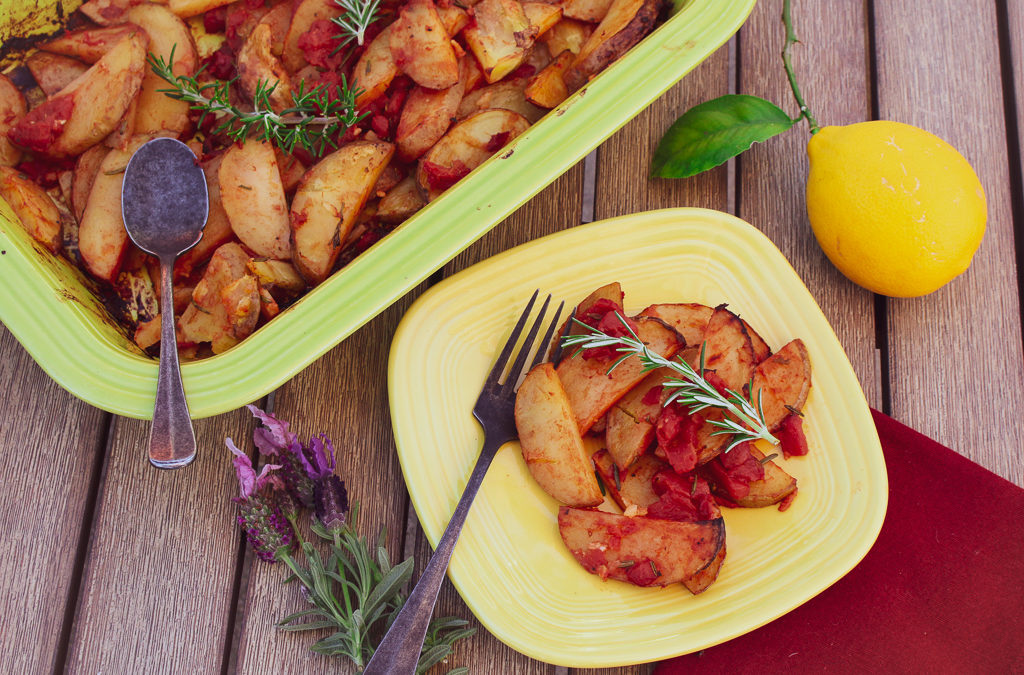
by Tomato Wellness | Jun 2, 2020 | Media Recipe, Recipes
Looking for an easy, classic potato side-dish you can throw together in minutes? Well, here you go! This simple, flavorful 4-ingredient side dish for Roasted Rosemary Potatoes and Tomatoes can be whipped up easy-peasy, out of ingredients you probably have in your pantry right now. The beauty of this vegetable and potato dish is that it calls upon three favorites—canned tomatoes, rosemary and potatoes. This 100% plant-based side-dish is the perfect accompaniment for savory dishes, such as lentil patties, chickpea loaf, and veggie balls. Plus it’s a great dish to tote along to your next potluck or even holiday dinner. Best of all, it’s an easy way to fit in a serving of healthful vegetables into your day!
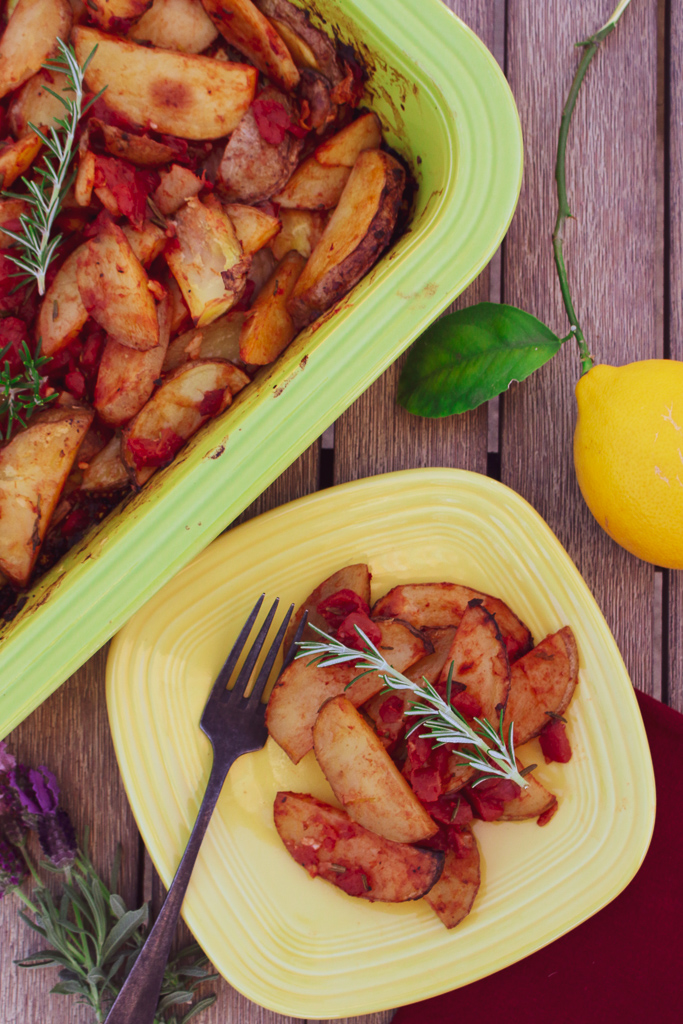
The classic Mediterranean flavors of rosemary, garlic, olive oil, and tomatoes are all alive and present in this satisfying dish. If you don’t have fresh rosemary available (which is one of the easiest herbs to grow in warm weather climates), used dried rosemary.
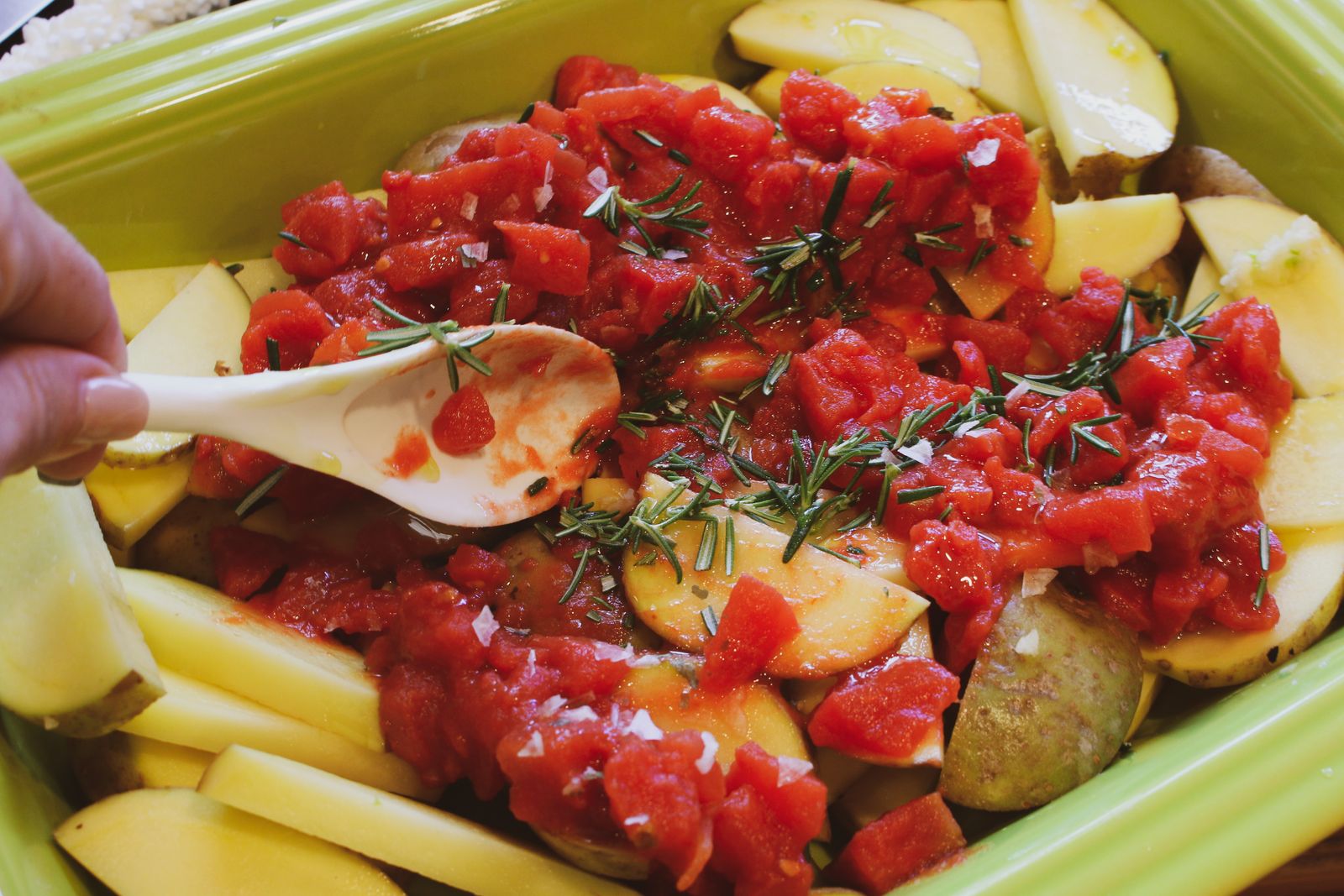
Spread tomatoes on top of potatoes and bake.
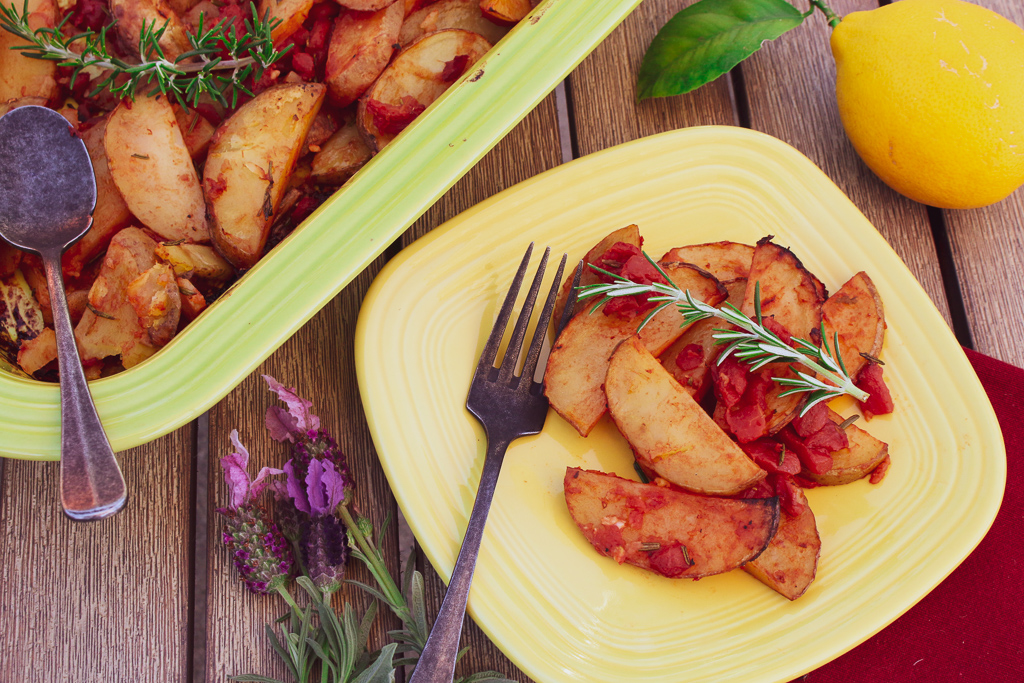
Ingredients
-
6 medium red and/or gold potatoes, unpeeled, scrubbed
-
2 cloves garlic, minced
-
1 14.5-ounce can diced tomatoes, drained
-
1 tablespoon extra virgin olive oil
-
Black pepper and salt, as desired (optional)
-
1 ½ teaspoons chopped fresh rosemary (or 1 teaspoon dried)
Instructions
- Preheat oven to 375 F.
- Slice unpeeled potatoes into thin wedges and place in a 9 × 13 inch baking dish.
- Spoon over garlic, canned diced tomatoes, olive oil, black pepper and salt (as desired), and rosemary. Toss to distribute ingredients using tongs or a spoon.
- Bake uncovered for about 1 hour, until tender and golden brown. Stir ingredients every 20 minutes.
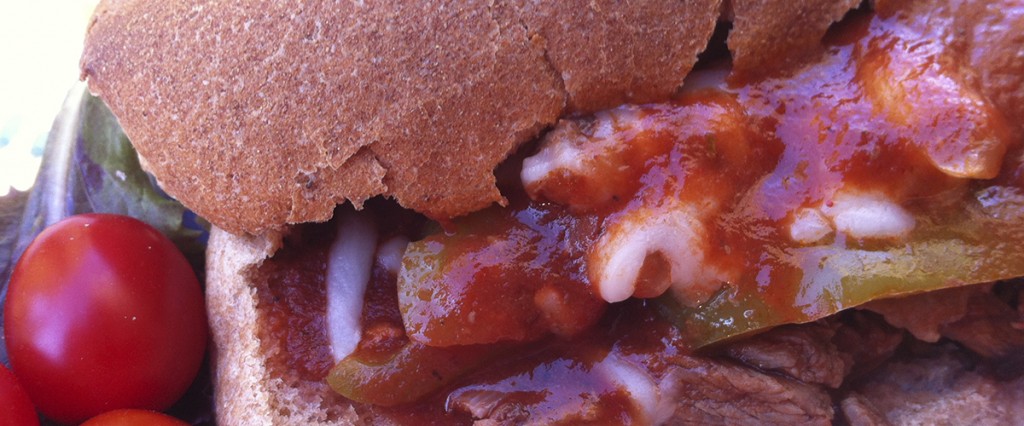
by Tomato Wellness | Sep 24, 2019 | Recipes
This lighter version of a classic favorite Philly Cheese Steak sandwich will help keep Dad healthy, while also keeping his taste buds more than satisfied. Plus, this recipe is full of cancer-fighting lycopene thanks to the canned tomato products! You can have this sandwich on its own, or pair it with your favorite salad and side dish for a filling, nutritious dinner everyone is sure to love!
Canned tomatoes are so much more than convenient pantry staples. They also provide the cancer fighting compound called lycopene! In fact, more than 1.3 million men are diagnosed with prostate cancer each year, and numerous studies suggest that lycopene has cancer-fighting properties. Lycopene can be found in tomato products, which contain anti-carcinogenic compounds, such as vitamin A, vitamin C, and fiber. With early detection and higher intake of fruits and vegetables, prostate cancer can be reduced. Thus, it’s important to ensure that you are eating healthy, well-balanced meals and staying active on a daily basis. You can increase lycopene in your diet by adding canned tomatoes into your favorite meals, such as pizza, stir fries, or even smoothies to boost those benefits! So go ahead, try out this Philly cheese steak sandwich and reap the health benefits it provides!
Ingredients
-
1 tablespoon extra virgin olive oil
-
1 lb. Lean skirt steak, thinly sliced
-
2 cloves garlic, minced
-
1 small yellow onion, sliced
-
2 oz portobello mushrooms, sliced
-
1 green bell pepper, sliced
-
1 15-oz can tomato sauce, no salt added
-
Ground black pepper, as desired
-
¼ tsp oregano
-
4 oz mozzarella cheese, part skim
-
4 whole grain rolls (hoagie or submarine), split
Instructions
- Heat olive oil in a large skillet or sauté pan.
- Place sliced steak into the pan and simmer until tender, about 15 minutes.
- Add garlic and onions, cooking for 2 minutes.
- Add mushrooms and peppers and simmer for an additional 10 minutes.
- Add tomato sauce, black pepper and oregano and bring to simmer. Cook until vegetables and meat are very tender.
- Arrange meat, vegetables and sauce over split roll and top with 1 oz of mozzarella cheese.
Nutrition Information:
Serving Size:
1
Amount Per Serving:
Calories: 597Total Fat: 33gSodium: 531mgCarbohydrates: 41gFiber: 6gProtein: 36g
If you’re looking for other delicious recipes that your dad you will love, check out some of our favorites:
Easy Chicken Curry
Swiss Chard Pecan Lasagna
Black Bean Corn Chili
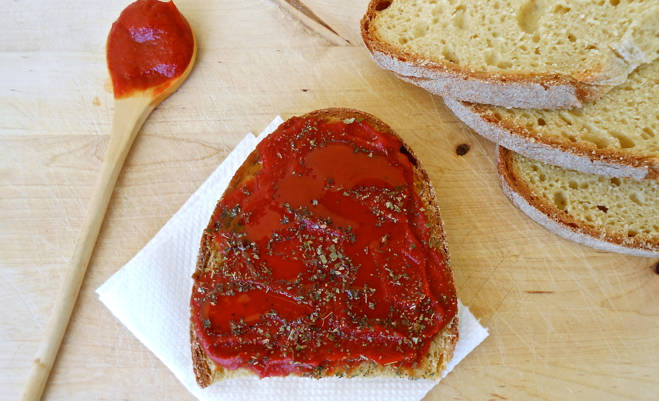
by Tomato Wellness | Jul 24, 2019 | Food and Nutrition
Tomato Paste, a Mediterranean Staple and Why You Should Use It
Tomato paste is a a Mediterranean staple! Learn more about why you should use it in the kitchen with this information blog from dietitian Elena Paravantes.
by Elena Paravantes, RD
In my mother’s descriptions of my grandmother’s cooking and her own, one ingredient would come up that seemed odd to me: tomato paste. I would wonder: why would you use all these fresh ingredients and then add a canned tomato product?
Well, in the olden days it served a purpose: it was used as a substitute for tomatoes, when fresh ones were not available. Tomato paste was made at home as a way to preserve tomatoes to use during the winter. I read somewhere that tomato paste originated in Italy and and then its use spread across other areas of the Mediterranean, which makes perfect sense considering how important tomato is in the Mediterranean cuisine.
My mother remembers as a little girl in the 50’s, going to the local deli (in Greece) and getting 1-2 tablespoons of the stuff on a piece of wax paper so her mother could use it for cooking. What did they do with it? Well they made the known kokkinista, which translates as the “red ones”. These are dishes either made with tomatoes or tomato paste, hence the name referring to the redness.The tomato paste along with olive oil is warmed up (or almost sautéed) in a pot or pan, and the vegetables or meat are added and cooked. Of course it is also used in pasta and sauces and basically when you want to give a little color or added flavor.
Nowadays you can get tomatoes year round (not great tasting ones though) or use canned tomatoes, so why not use that instead? My mom noted that using the paste really gives a different, unique flavor that you just can’t get with fresh tomatoes or canned tomatoes. And why not? Nutritionally, you will get plenty of benefits with tomato paste.
Tomato paste basically consists of cooked tomatoes that are strained. Studies have shown that processed tomato products such as tomato paste have higher levels of lycopene, an antioxidant known for its protective effect against some forms of cancer and also promoting skin health. But tomato paste is not what I would consider a processed product (in the bad sense), it is just heated and strained, containing only tomatoes and sometimes salt (no preservatives or sugar). In addition, when adding olive oil, as is common in Greek cooking, not only do you get the good monounsaturated fats and olive oil antioxidants, but the presence of fat increase the absorption of the antioxidants in the tomato. And if you are cooking with tomato paste you get an additional benefit: heating tomato paste with olive oil increases antioxidant activity.
A Quick Snack
My mother recalls the “poor” children getting a large slice of bread with tomato paste, drizzled with olive oil and sprinkled with oregano – a wonderful snack full of antioxidants from the tomato paste, olive oil and oregano plus good fats. The rich kids would get a slice of bread too, but with butter, sprinkled with sugar as those ingredients were more expensive and only people who had money could get them. How ironic, considering that the poor kid’s snack was so much healthier than the rich kid’s snack. Poor or not, I love that snack and my mom would give it to us slightly altering it and calling it “pizza”: bread brushed with olive oil and tomato paste, sprinkled with oregano and some shredded cheese, baked in the oven for 5 minutes.
Registered Dietitian
Award winning Registered Dietitian, Nutritionist and Writer specializing in the Mediterranean Diet. She has been active in the field of food and nutrition for over 15 years as a clinical dietitian, food and nutrition consultant, writer, teacher and lecturer, both in the U.S. and in Greece. Elena firmly believes in the wide-ranging health benefits of the Mediterranean Diet and is committed to educating the public about the wholesome food plan she grew up with through her writing, teaching and lecturing.
To learn more, check out Elena’s website: OliveTomato





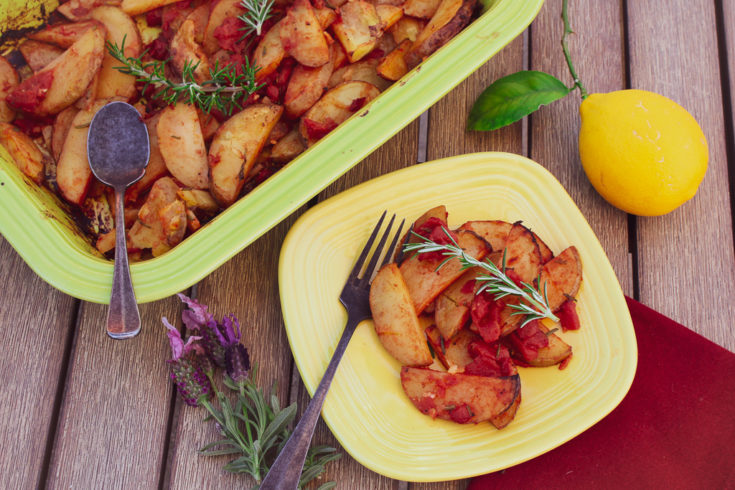




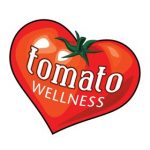
Recent Comments